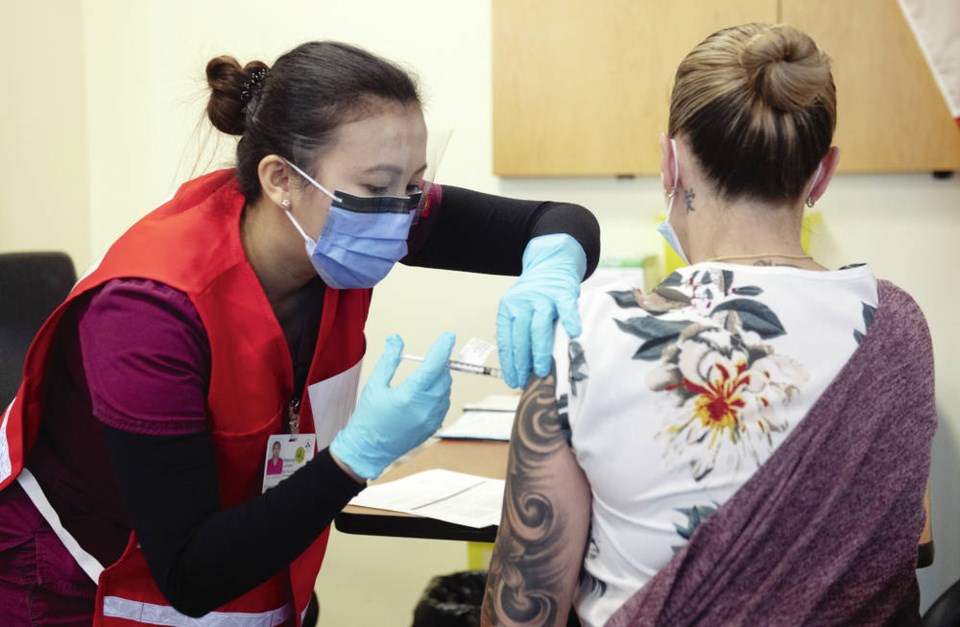Many British Columbians welcomed the announcement that Health sa���ʴ�ý has approved a COVID-19 vaccine developed by Pfizer and BioNTech.
But hard work remains to ensure that vaccinations safely benefit as many people as possible. Much is at stake: Even if many individuals are vaccinated, if many more are not, the potential remains for coronavirus to continue circulating.
And yet a recent poll by Angus Reid suggested that 13 per cent of British Columbians did not intend to get vaccinated, and 41 per cent intended to wait for others to be vaccinated first.
Vaccine hesitancy is as old as vaccines, but current forces work to make it especially strong. For some people, a negative view of vaccination aligns with beliefs concerning intrusive governments, for-profit medicine or elitist scientific institutions.
For others, the breakneck pace of COVID-19 vaccine development gives rise to safety concerns, especially concerning possible long-term side effects. Social media can work to amplify such sentiments and create a climate of uncertainty.
Such reservations should be taken seriously. It’s true that research on COVID-19 has proceeded faster than for any previous vaccine. However, Canadians faced similar uncertainty during the public-health crisis caused by polio.
It is helpful to recall sa���ʴ�ý’s role in the rescue of North America’s great polio vaccination campaign and the obstacles that were overcome.
Polio terrified families. It could cause death or lifelong disability, and children were its most common victims. As outbreaks worsened in the late 1940s and early 1950s, vaccine researchers worked furiously.
By 1954, a team in Pittsburgh, led by Jonas Salk, had developed a vaccine containing inactivated poliovirus. Salk’s program relied on Connaught Medical Research Laboratories in Toronto to provide “Medium 199,” a synthetic mixture used to grow large quantities of poliovirus for the vaccines.
At first, this scientific effort inspired great support. Nearly 1.8 million American children, encouraged by their parents, received injections during a massive field trial.
After positive results were announced to a jubilant nation on April 12, 1955, the U.S. Food and Drug Administration approved the Salk vaccine within hours.
Only weeks later, however, polio cases were found in five Western and mid-Western states. Investigation revealed that Cutter Laboratories in Berkeley, California, had not properly inactivated the virus in some vaccine doses.
More than 40,000 infections, more than 150 cases of paralysis and 10 deaths were attributed to Cutter vaccines. The United States shut down its entire vaccination program.
When pressure mounted for sa���ʴ�ý to do likewise, the decision for or against the Salk vaccine fell to Health Minister Paul Martin, Sr.
He had been blinded in one eye by a childhood bout with polio, and his son, the future prime minister Paul Martin, Jr., had survived a mild case of the disease in 1946.
Martin learned that no Canadians had contracted polio from vaccines manufactured at Connaught Labs, and its scientists expressed confidence in their production protocols.
Informed by experts and by life experience, Martin ordered vaccine distribution to proceed. The program worked, and cases of polio plunged in the later 1950s.
After the Cutter disaster, no one could say that the polio vaccine was risk-free. But Martin’s decision was not a leap of faith; it was a measured step that weighed the minimal risk of harm against the anticipated benefits for millions of citizens.
sa���ʴ�ý’s results helped restore trust in the Salk vaccine in the United States, and thereafter Connaught exported millions of vaccine doses around the world.
As the COVID vaccine arrives, scientists and public health officials will debunk myths and combat misinformation.
This is important, but sa���ʴ�ý’s response to the Cutter incident suggests that we can do more. We can acknowledge the legitimate concerns that vaccines elicit while placing genuine risks in context. We can support rigorous medical science and expect transparency from its practitioners.
And we can foster access to professional health care for everyone so that people are not left to their own devices for information about vaccines and other health matters.
Despite real challenges, the polio vaccine succeeded. As this grim year ends, can COVID-19 vaccines similarly begin to ease the burden of disease, renew the prospect of public gatherings, and remind us how to join together for common good?
It’s worth a shot.
Mitchell Hammond is an assistant professor of history at the University of Victoria. His book Epidemics and the Modern World was published by the University of Toronto Press in January.



